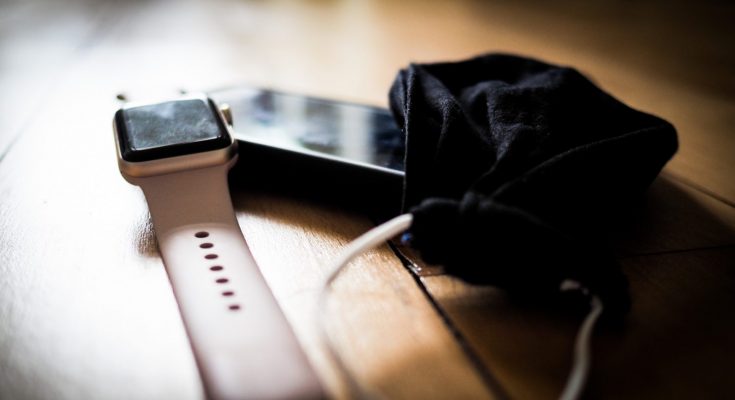Par Dana Mahr
One of various ways to understand the COVID-19 pandemic of 2020 is to view it in form of a real-time experiment in balancing medical and economic as well as individual and collective needs. The modeling of pandemic preparedness scenarios before the outbreak of SARS-CoV-2 largely depended upon only two sets of information: Data derived from surveying the spread of the common flu (influenza A-C) and incomplete information about historical pandemics like the Spanish Flu of 1918 to 1919, the Asian Flu of 1957, the Hong Kong Flu of 1968, or even other types of viruses like for example HIV (Medema et al. 2004). The problem with this information was twofold. Either it was fragmented, as the outbreak of the disease correlated for example with other crises such as World War I, or it was not very well measurable due to low R0 and relatively low morbidity and mortality. Even Google’s attempt to develop pandemic influenza models based on search terms has not been very successful. In contrast, the outbreak of the new coronavirus of 2020 promises to generate a wealth of data. In the age of digital and networked reporting of confirmed infections, deaths and recoveries along with the technological promise to illuminate the exit phase of many countries with the help of smartphone applications, resembling an „transparent pandemic“ (as „golden grail of modelling“) no longer seems far away. Even if the reported data can never be complete or accurate, many expect significant progress against the background of the keyword „big data“. For Sy Pretorius, the Vice President of Parexel, a global provider of biopharmaceutical services, humankind, accelerated by the pandemic of 2020 enters an era of „Real World Evidence“ from „numerous data sets“. These datasets include smartphone based proximity tracking – that will enable epidemiologists, biostatisticians policy makers, and ordinary citizens to take immediate actions (Bean 2020). The „World Economic Forum“ (WEF) even states that due to such strategies an ideal equilibrium between economic losses and deaths might evolve (Zaimova 2020).
Other commenters on this situation are going so far as to claim that the current pandemic will transform our societies even deeper than the Bubonic Plague or the Spanish Flu combined. Ericson Chan, the CEO of Ping An Technology (平安科技) China, one of the world’s largest service providers for finance and health institutions predicts for example that the post COVID19 world might adopt a new „social contract for data privacy“ (Chan 2020). If we follow Chan’s reasoning, this new social contract already casts its shadow:
„There is a growing number of countries like Israel, South Korea, China are combating COVID19 with rigorous contact tracing. How this is done is leveraging on everyone’s geolocation and online activity to subsequently monitor and control the spread of the virus. For now, how this will impact privacy is still uncertain. Yet, the fact is that it opens a whole new can of worms on data privacy under the humanitarian banner. Many governments are now insinuating that digital contact tracing will need to last for at least 2 years until a vaccine is fully available. AI and big data will also be more critical than ever before, especially for impact analysis and forecast. Further, surveillance types of data will be used more widely, more frequently and in a more granular manner“ (ibid.).
What role does the population play in the near future outlined by Chan? Will the citizens of the states affected by the novel virus submit to a data driven real-time dictatorship, as the French philosopher Michel Foucault predicted in his writings on biogovernementality (Foucault 1978-1979)? Or might they become sovereign entities of their own digital footprint, for example as shareholders of data cooperatives like the SWISS non profit startup MIDATA seeks to establish? The more likely scenario seems to be a middle position, focusing on the adaptive logistical possibilities for epidemiological extreme situations. Against this backdrop, smartphone based (self-)monitoring might, evolve into a more or less common infrastructure that ties the modeling of disease distribution and the proximity of individuals together in real time without using location data.
Despite what the quote by Chan might suggest, proximity tracking and geo-location data are not exactly the same, and neither are their privacy risks. The latter might reveal detailed movement profiles of individuals, like the Marauder’s Map in the Harry Potter novels did (see „The Equilibrium of Control I“). Depending on the situation, it can either be helpful or problematic. Many people use Google Maps to find their way in foreign cities, to spot the next UBER, or to optimize their jogging routes. But all those geo-location services might become exploitable under specific circumstances. The case of the fitness App Strava is emblematic of this since it gave away the location of secret US army bases via exercise routes that soldiers shared online (Hern 2018). The frameworks that are developed during the SARS-CoV-2 pandemic take a different approach. They don’t estimate the real world geographical location of a source via Satelite and GSM interactions, but are rather based on encrypted and anonymized smartphone to smartphone interactions (Apple/Google 2020). In concrete terms, epidemiological proximity trackers are scanning for other nearby phones and distribute via bluetooth pieces of code that are derived of the smartphones unique IMEI number. Other smartphones nearby receive this code, save it, and build a contact log. If an indivual receives a positive COVID19 diagnosis, they are asked to share their ID to a central (App and country specific) database. If there are matching contact points with other phones within a specific timeframe their users receive an alert about a possible exposure. From a theoretical point of view, the dangers for the protection of individual data with this method are very low according to current knowledge (Brandom 2020). In practice, however, other problems arise, which are not dissimilar to those of the even loss distribution considerations of early modern times. They have a logistical focus. It centres less on control than on the creation of an equilibrium between individual, collective, and economic interests. The development and implementation of the Swiss DP^3T App is exemplary for this.
Corona Tracking in Switzerland
In mid April 2020 an international group of researchers published a „Joint Statement on Contact Tracing“ (Kaafar et al. 2020). Their aim was to counteract a possible expansion of data use and pursue a decentralised approach towards data storage and processing, as provided by DP3T, PACT or the TCN encryption protocols. In contrast to this international focus, the European Parliament began to favorize another, more centralized option, by endorsing the Pan-Europen Privacy-Proximity Tracing (PEPP-PT) consortium (EU 2020). This consortium turned quickly to more centralized solutions and finally removed the decentral DP3T security protocol, which was co-programmed by researchers from Switzerland from their homepage and GitHub ressources. As a response to this, the EPFL epidemiologist Marcel Salathé and the ETH professor Kenneth Paterson left the European consortium (Fichter 2020). In the following weeks, the teams around these two researchers intensified their efforts to further develop a local, decentralized and Swiss solution.
This solution is, as the freely accessible project documentation shows (DP3T 2020), not only centered around security, privacy, and openness goals but also integrates educative components for the re-entry into the containment (or exit-phase) of the pandemic. Beyond its proximity tracking engine, the final App will also distribute official public health information and instructions for self-isolation in the case of exposure (Ibid). Such incentives for the users self-control during the re-opening phase of the country, mirror in their intended functionality Agricola’s strategy from the 16th century to create an equilibrium between individual freedom, community health, political stability, and economic interests. While infection rates might rise again, during the different phases for the re-opening of public life in Switzerland in May 2020, the App is designed to serve as a risk mitigation tool to reduce both the logistic burden on hospitals and the pressure on the Swiss economy due to an prolongated lockdown period. As such, the Swiss Federal Council hopes to use this or similar Apps during the reopening period to „avoid the delcaration of emergency decrees“ or even lockdown orders in future epi- or pandemics (Bundesrat 2020).
While the „Swiss PT-App“ is currently being tested in a field trial by one hundred Swiss soldiers, its public release was initially planned for Friday May 8th 2020 but has since been postponed to June. As the increased media and official reference to the App and ist history of development shows (Schurter 2020, Mäder and Thier 2020, Fichter 2020b), it will also include another function. This function is more symbolic and implicitly aims to contribute both to the strengthening of social cohesion and to the perceived agency of the population. It creates the illusion of a level of participation in crisis management that goes beyond state appeals for social distance or wearing protective masks in public. In view of the recent rise of protests against « stay at home orders », « social distancing » and « lockdown » in the economy (e.g. the storming of the Capitol in Michigan, USA on May 4th 2020 by right-wing protesters) technological tools may seem like a solution in the hands of the population. Given both their design and the way how they display epidemiological and political information, the user (even if in reality passive) is at the center of them. In the inherent narrative of proximity tracking Apps, it is the user who exerts epidemological control and can at the same time indulge the illusion of low-risk mobility in the context of the reopening of her/his/their economic and social lifeworld. This regulatory illusion of participation might be the biggest difference between past methods of managing epi- and pandemics and those of today.
The „Swiss PT-App“ might even go a step further than other proximity tracking solutions, since both the communication sourrounding it and its presentation are charged with symbolism of Swiss libertinism. This finds its reflection in a discoursive focus on decentralization. It might be no accident that Marcel Salathé and his colleague Kenneth Paterson are elevated in various media narratives to modern Wilhelm Tells of the pandemic (e.g. Fichter 2020b). An iconography that was by his contemporaries of the sixteenth century also applied to Agricola and his regulatory work „de peste“ (Prescher 1994).
Conclusion: Digital Agency and Crisis
While both the President of the United States and 21st century techmogul Elon Musk support the US-wide protests against the prolongation of lockdown measures via Twitter, more responsible politicians and experts take refuge in the imagination of technical solutions. The logistics of control in times of crisis focused in epi- and pandemic times on creating an equilibrium between the crisis-induced interests of the many actors that make up the social, political, and economic fabric of a society. With the widespread data-oriented, networked and portable technologies of the early 21st century, another tool for establishing such a balance in crisis management may emerge. This new tool symbolizes individual agency because at the same time it acts as a population measurement tool. In this respect, it may be able to cushion the loss of balance in the management of a pandemic in terms of symbolic participation of users. Even if the epidemiological benefit of Apps such as the « Swiss PT-APP » is not yet clear, their development communicates something else, namely, the idea of a committed state that invites its population to take action themselves to overcome the lockdown without further damage. With such Apps, however, new dangers surface. Some actors may say that it could be a threat to privacy and data protection. From my perspective, however, there are more alarming concerns. The App will not reach people who do not have a smartphone. Will policy makers and epidemiologists become blind to this minority population? Furthermore, it remains unclear how the App will deal with the problem of false positives and the mass hysteria and anguish this may cause to nearby unsuspecting devices, thereby leading to a possible overburdening of the healthcare system. Paradoxically this is exactly the problem it was designed to balance. These and other concerns remain yet unaddressed.
References
Apple Inc., Google LCC (2020): Privacy-Preserving Contact Tracing: https://www.apple.com/covid19/contacttracing/ (last access: April 04. 2020).
Bean, Randy (2020): Big Data in the time of Coronavirus (COVID-19). Forbes (online): https://www.forbes.com/sites/ciocentral/2020/03/30/big-data-in-the-time-of-coronavirus-covid-19/#b89f4bc58fc9 (last access: April 04. 2020).
Bundesrat – BR (2020): 20.3168 Gesetzliche Grundlagen zur Einführung der Corona-Warn-App (Corona-Proximity-Tracing-App) (online): https://www.parlament.ch/de/ratsbetrieb/suche-curia-vista/geschaeft?AffairId=20203168 (last access: April 04. 2020).
Chan, Ericson (2020): 5 ways the world will change post COVID19, Centre for Finance, Technology and Entrepreneurship (online): https://cfte.education/2020/04/24/5-ways-the-world-will-change-post-covid19-by-ericson-chan/ (last access: April 04. 2020).
DP^3T (2020): Decentralized Privacy-Preserving Proximity Tracing – gitthub (online): https://github.com/DP-3T (last access: April 04. 2020).
European Parliament (2020): 99_TA(2020)0054. EU coordinated action to combat the COVID-19 pandemic and its consequences: https://www.europarl.europa.eu/doceo/document/TA-9-2020-0054_EN.pdf (last access: April 04. 2020).
Fichter, Adrienne (2020): Setzt die Corona-App aus der Schweiz europaweite Standards? Republik (online): https://www.republik.ch/2020/04/22/setzt-die-corona-app-aus-der-schweiz-europaweit-standards (last access: April 04. 2020).
Fichter, Adrienne (2020b): Das grosse sozial-digitale Experiement. Republik (online): https://www.republik.ch/2020/04/16/das-grosse-sozial-digitale-experiment (last access: April 04. 2020).
Foucault, Michel (2004 (=1978-1979)): La Naissance de la biopolitique. Cours au Collège de France. Haute Etudes, EHESS. Hallimasch. Seuil: Paris.
Hern, Alex (2018): Fitness tracking app Strava gives away location of secret US army bases. The Guardian (online): https://www.theguardian.com/world/2018/jan/28/fitness-tracking-app-gives-away-location-of-secret-us-army-bases (last access: April 04. 2020).
Kaafar, Dali et al. (2020): Déclaration commune sur le traçage des contacts : Date : 19 avril 2020: https://www.esat.kuleuven.be/cosic/sites/contact-tracing-joint-statement/wp-content/uploads/sites/7/2020/04/d%C3%A9claration-commune-tracage-contacts.pdf (last access: April 04. 2020).
Mäder, Lukas, Thier, Jenni (2020): Nur eine knappe Mehrheit der Parlamentarier will die Tracing-App bei sich selbst installieren. Neue Zürcher Zeitung (online): https://www.nzz.ch/schweiz/nur-knappe-mehrheit-der-parlamentarier-will-tracing-app-bei-sich-selbst-installieren-ld.1554468 (last access: April 04. 2020).
Schurter, Daniel (2020): Die Schweizer Corona-Warn-App kommt – das sind die wichtigsten Fakten. Watson (online): https://www.watson.ch/digital/schweiz/485691969-corona-warn-app-das-muss-du-ueber-das-schweizer-proximity-tracing-wissen#h4_50 (last access: April 04. 2020).
Zaimova, Rosita (2020): How data can help fight a health crisis like the coronavirus. World Economic Forum (online): https://www.weforum.org/agenda/2020/03/role-data-fight-coronavirus-epidemic/ (last access: April 04. 2020).
Dana Mahr est senior researcher au sein du groupe de recherche ERC/SNF « Repenser la participation publique et la science » à l’Université de Genève. Ses recherches portent sur la façon dont les « gens ordinaires » donnent un sens à la science, à la technologie et à la médecine. Elle est actuellement en train de rédiger le manuscrit de son deuxième livre. Il explorera comment l’essor des applications du web 2.0 et des réseaux de partage de données sur la santé influencent les pratiques d’auto-assistance des femmes. En outre, elle co-dirige le sous-groupe basé à Genève du projet DoPHiS Sinergia sur la médecine personnalisée.




